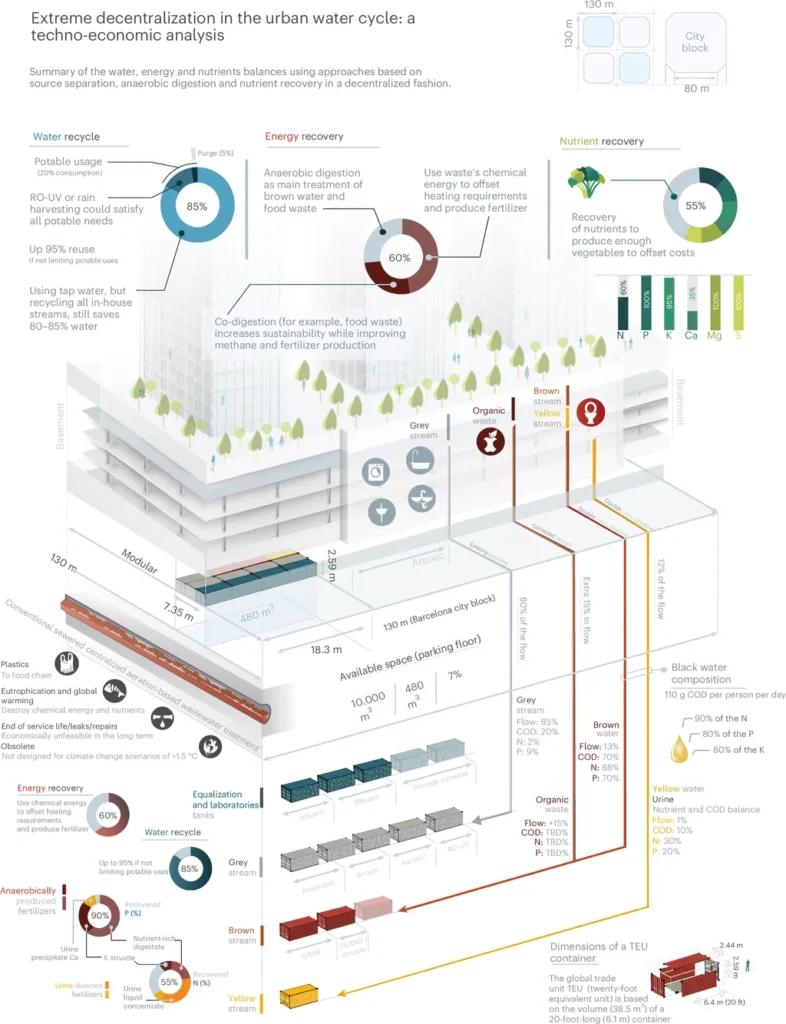In the heart of China, researchers are pioneering a strategic approach to revolutionize urban water management, with significant implications for the energy sector. Xinyu Pan, a leading expert from the State Key Laboratory of Urban Water Resource and Environment at Harbin Institute of Technology, has published a groundbreaking study in the journal *Engineering* (which translates to “Engineering” in English), outlining a comprehensive strategy for decarbonizing urban water systems.
The study, titled “Towards Sustainable Urban Water System: A Strategic Approach to Advance Decarbonizing Water Management,” challenges traditional end-of-pipe treatment approaches, advocating instead for a paradigm shift towards decentralized water systems (DWS), source separation, and low-carbon water treatment technologies. This holistic planning approach aims to reduce the carbon intensity of urban water systems, aligning with global climate goals.
Pan emphasizes the critical role of DWS in implementing a sustainable urban water system. “Decentralized water systems are fundamental to achieving sustainability,” Pan asserts. “They offer a more flexible and efficient approach to water management, reducing energy consumption and minimizing environmental impact.”
The research highlights the importance of on-site source separation of grey water, feces, and yellow water within DWS. This primary approach facilitates wastewater reuse and nutrient recovery, contributing to a more sustainable urban water system. “Source separation is a game-changer,” Pan explains. “It allows us to treat different types of wastewater more effectively, recovering valuable resources and reducing the overall carbon footprint.”
The study also delves into low-carbon water treatment technologies, focusing on resource conservation and recovery. Rainwater control, efficiency improvements, and low energy consumption are key strategies for resource conservation. Meanwhile, resource recovery is achieved through carbon capturing and energy/nutrient recovery. “These technologies are not just environmentally friendly; they are also economically viable,” Pan notes. “They offer significant cost savings and commercial opportunities for the energy sector.”
The implications of this research are far-reaching. By integrating DWS, source separation, and low-carbon water treatment technologies, urban water management can be transformed into a sustainable and efficient system. This shift can lead to reduced carbon emissions, lower energy consumption, and valuable resource recovery, all of which are crucial for achieving global climate goals.
As the world grapples with the challenges of climate change and resource depletion, Pan’s research offers a beacon of hope. It provides a roadmap for the future of urban water management, one that is sustainable, efficient, and beneficial for both the environment and the energy sector. The study’s publication in *Engineering* underscores its significance and relevance to the global scientific community.
In the words of Pan, “This is not just about water management; it’s about creating a sustainable future for all.” As we stand on the brink of a new era in urban water management, Pan’s research serves as a guiding light, illuminating the path towards a more sustainable and resilient future.

